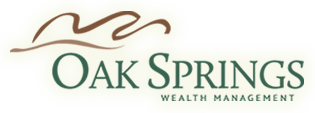The first half of 2017 is in the books. And perhaps the best performing half of the year is behind us. Or, maybe not. The Trump presidential win and the market’s belief that his healthcare, tax, and regulation reform would drive positive market conditions was the driving force for the first 6 months of 2017. The Republican Party’s failure to act dampened that belief. However, Senate Republicans have agreed to shorten their summer vacation to work hard at coming to agreement on healthcare. Success could lead to tax reform and that would lead to an extension of the bull market. Already one of the longest in history.
There were several other factors at work in the 2nd quarter. Most prominent was the move by the FED and the European Central Bank to indicate that their hands were on the spigot ready to reduce the free money flow which has been the market’s primary driver for the past 8 years. The FED has been most active, raising their rate by .25 and threatening to do so again two or three more times in 2017. The bet is now that there will only be 1 more rate increase this year. But additionally, the FED has indicated it will begin unwinding its 4 trillion-dollar bond portfolio starting in September. When the FED moves from buying to selling treasury and mortgage bonds, interest rates will rise. If you have any interest rate that is not fixed, you will quickly see the impact. Meanwhile, inflation continues to be a problem for the FED, because there is very little of it. Perhaps the new normal is an inflation rate under 2%, or, it could be indication of an underlying problem in the global economy. Deflation.
The FED’s move to raise rates has brought the bond market rally to a halt. Treasury rates rocketed up during the month of June. Rates go up as bond prices go down. Oak Springs has not held treasury positions since the summer of 2016. The dollar has been weakening since its high mark in November.
Gold was the fastest rising asset for the first 5 months of the year but then began to fall as the overall commodity market had a sharp pull back. Typically, not a good sign. A growing economy would normally increase the demand for commodities and push prices higher.
A significant change in the market’s reporting period for the 1st quarter was a move to a fundamental market versus a market propped up by free money and companies buying back their own stock. A closer look showed that the US companies with positive revenue and earnings were typically companies doing business outside the US. In fact, our positions in the international and emerging markets have been our portfolio’s best performers for the year. Earlier in the year we increased our exposure to those markets while reducing our exposure to the domestic market.
Categories
Archives
- April 2025
- January 2025
- October 2024
- July 2024
- April 2024
- January 2024
- October 2023
- July 2023
- April 2023
- January 2023
- October 2022
- July 2022
- May 2022
- January 2022
- October 2021
- July 2021
- January 2021
- October 2020
- April 2020
- January 2020
- October 2019
- July 2019
- April 2019
- January 2019
- October 2018
- July 2018
- April 2018
- February 2018
- October 2017
- July 2017
- April 2017
- January 2017
- November 2016
- September 2016
- July 2016
- May 2016
- February 2016
- January 2016
- December 2015
- November 2015
- November 2014
- August 2014
- July 2014
- June 2014
- May 2014
- April 2014
- March 2014
- October 2013
